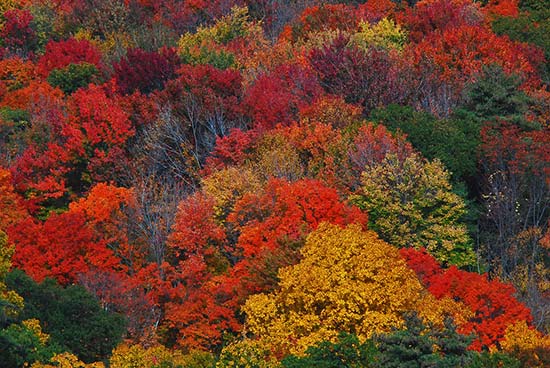Longer summers and irregular weather could harm breathtaking autumn foliage

Climate and weather patterns play a large role in the transition of the leaves from green to the breathtaking autumn colors.
As it transitions to the fall and winter months, the days get shorter and the nights get longer. The temperatures typically cool in late September into early October, especially at night.
The transition to shorter days and cooler weather enables the changing of the colors.

During the spring and summer, chlorophyll, which keeps the green color in leaves, is constantly being replaced due to longer days and more sunlight.
However, chlorophyll can't be replaced at the same rate during the winter months due to the shorter days and less sunlight.
This process does not allow chlorophyll to spread to the leaves and the existing chlorophyll present in the leaves will begin to disappear. As chlorophyll dwindles, the changing of colors begins.
Cool and dry weather during this transition period is favorable for the autumn colors.
The changing climate, including increasing temperatures and irregular weather patterns, will likely affect fall foliage. However, more data is needed to determine the impacts.
Warmer weather in the northern tier of the eastern United States has caused peak fall colors to occur later, according to Dr. Marc Abrams, professor of ecosystem science and management at Penn State University.
Temperatures typically cool significantly by late September, particularly nighttime temperatures going into the low 40s and even into the 30s. This cooldown is important for fall foliage.
“If global warming is reducing that cooldown phase, it’s going to reduce the potential for fall colors,”Abrams said.

Irregular weather patterns, such as above-average precipitation during the transition period, can also have an impact on fall foliage.
Cool and dry temperatures are desirable in the period from late September to mid-October. These conditions cause the breakdown of chlorophyll, the green color, and expose the red, yellow and orange pigments that produce the fall colors, Abrams said.
Very wet weather during the critical period will negatively impact fall foliage.
In contrast, very dry summer weather may stress trees, causing colors to be delayed and vibrant yellows, reds and oranges may struggle to develop.
Strong storms and high wind speeds are another potential negative impact on foliage.

